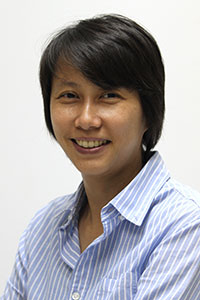When I learnt of City Hall's plan to grow one million trees in various districts of Bangkok, I could hardly believe my ears. It was hard to believe that the agency, which is known for its love-hate relationship with trees -- could change its attitude, especially if you look at the way city workers abuse trees by leaving them completely bare and without branches.
The project, branded as "Now Moving Forward", was initiated last year and stipulates the planting of trees on pavements and "road islands" on nine main roads.
It is part of a plan to make Bangkok, a mega-city, full of green spaces and convenience. The designated nine roads are Srinakarin-Romklao, Sukhumvit, Vibhavadi Rangsit, Mit Maitree, Ratchadaphisek, Sri Ayutthaya, Liab Klong Modtanoi, and Hathairat.
The Environment Department explained that the trees for the project will be easy-to-care for ones like tamarind, sok nam, and lueng Pridiyathorn, to name a few. Hence, they will require low maintenance.
Moreover, it is understood that these trees should help absorb air pollution which will help fight against toxic smog, which we can expect every winter from now onwards.
The authorities said that the different plants were chosen for different locations in a bid to create a new identity for each area.
While I don't have much knowledge about gardening or trees, the reasons seem to make sense. Yet, I don't understand which criteria the agency is using when deciding what type of tree will be planted on each road.
Currently, Bangkok is covered with 24,000 rai of trees (one rai is equivalent to 1,600 sq metres) in more than 8,000 parks -- ranging from mini to small and big -- or 2.44% of the city's total space. Another way of looking at this is 6.73 sq metres of green area per resident.
Perhaps Bangkok is trying to compete with Seoul. The South Korean capital's city administration announced last month that it plans to spend 480 billion won (13.3 billion baht) to plant 15 million trees by 2022. This move comes after Seoul already planted 15 million trees between 2014 and 2018, which means the city can expect more greenery by 2021.
Bangkok governor Aswin Kwanmuang probably realised that the sight of picturesque trees can be a selling point after people started sharing photos of rose trumpet trees in the Chatuchak area. Mr Aswin claimed that the pink-flowered plant is a Thai version of the sakura.
The presence of more trees in Seoul will increase the amount of oxygen, enabling the city to better cope with polluting particles caused by exhaust fumes from cars.
Although the number -- one million trees -- doesn't sound as ambitious as the 15 million envisaged by our Asian counterpart, Seoul, the project will be a big challenge for Bangkok as it aims to make the city greener as other departments seem set on chopping down trees.
Let me give an example. Some readers may know of Klong Lat Phrao, which was once lined with fully grown trees that provided much-needed shade. It was an impressive sight, one that I still remember from one of my first visits about six years ago.
Klong Lat Phrao is one of nine canals in Bangkok that has been used to drain rainwater and runoff from the North of Thailand. During floods in 2011, rubbish and homes along the canal banks were blamed for obstructing the water flow, curbing the canal's draining ability.
As a result, redevelopment began in 2016 with the goal of widening the canal in order to facilitate drainage. Over 7,000 families, which resided on the plot of land belonging to the Treasury Department, were relocated in 50 communities.
I still remember how I could cycle into the community under the shade of big trees along the canal. But no more.
Last month, all the wooden homes and those decades-old trees on the west bank of the canal were gone, while the plots along the east bank -- held by private owners -- are still full of trees.
I was told by a community leader that dozens of fully grown trees had to be felled because there was not enough space to accommodate all the families. The community had no other choice but to opt for new accommodation and cut down the old trees.
In a way, I'm glad these families with low incomes were given new homes, under a collaborative project between the Ministry of Social Development, Human Security, and the Community Organisations Development Institute.
The new homes, which are cleaner and better equipped, will definitely boost the quality of life of these people. But as I passed their box-shaped homes with glass doors from floor to ceiling, just like greenhouses, I could only imagine the heat inside and the electricity bills they'll have to pay, especially in summer.
How I wish we could come up with better designs to provide standard accommodation for low-income families and, at the same time, save big trees in the communities! Such an option simply does not exist right now.
If these people want the cool shade of trees, they will have to brave the fierce rays of the sun and travel all the way to the pavements along Vibhavadi Rangsit highway. I really pity them.
Sirinya Wattanasukchai is a columnist, Bangkok Post.
